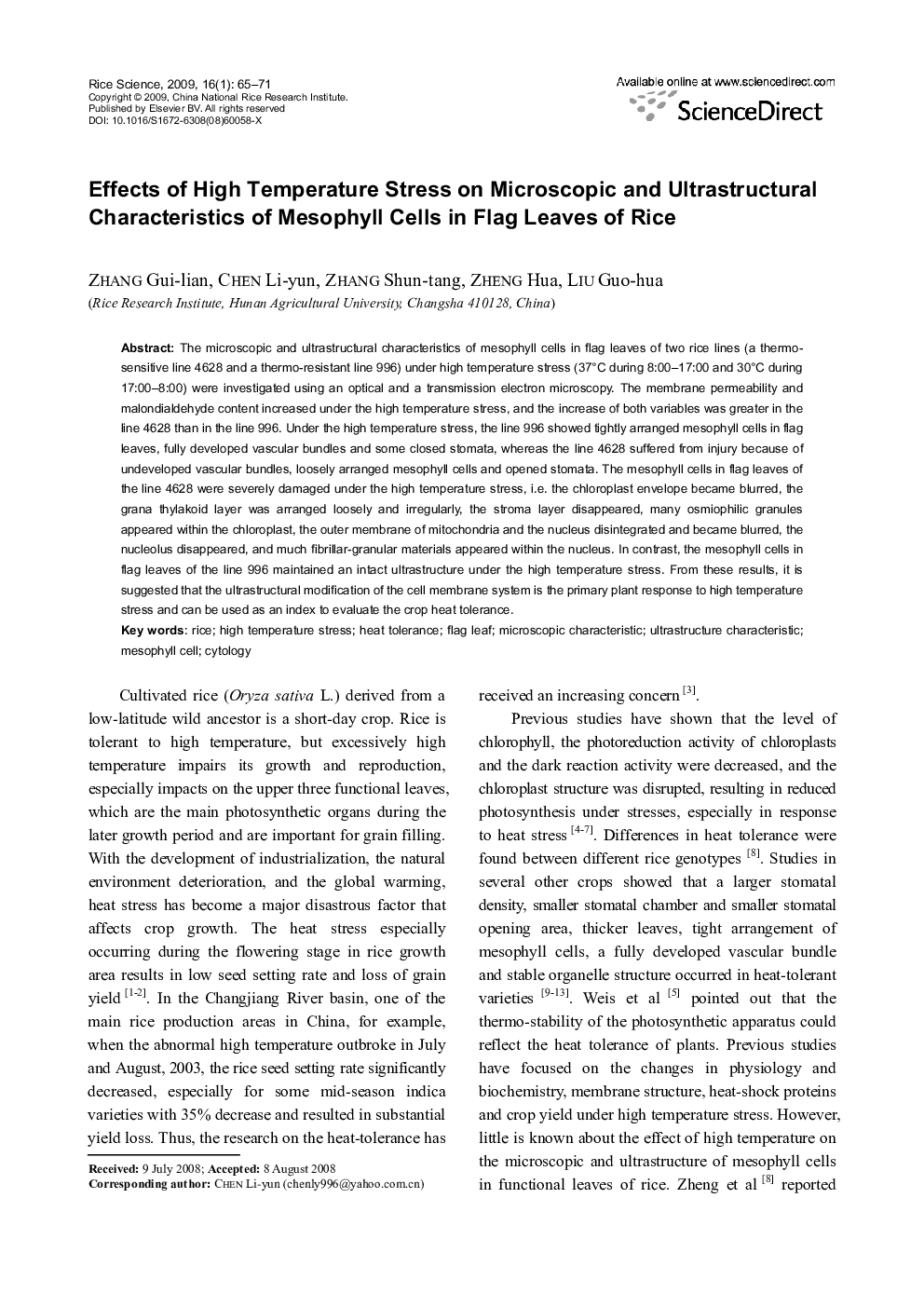| Article ID | Journal | Published Year | Pages | File Type |
|---|---|---|---|---|
| 4502117 | Rice Science | 2009 | 7 Pages |
The microscopic and ultrastructural characteristics of mesophyll cells in flag leaves of two rice lines (a thermosensitive line 4628 and a thermo-resistant line 996) under high temperature stress (37°C during 8:00–17:00 and 30°C during 17:00–8:00) were investigated using an optical and a transmission electron microscopy. The membrane permeability and malondialdehyde content increased under the high temperature stress, and the increase of both variables was greater in the line 4628 than in the line 996. Under the high temperature stress, the line 996 showed tightly arranged mesophyll cells in flag leaves, fully developed vascular bundles and some closed stomata, whereas the line 4628 suffered from injury because of undeveloped vascular bundles, loosely arranged mesophyll cells and opened stomata. The mesophyll cells in flag leaves of the line 4628 were severely damaged under the high temperature stress, i.e. the chloroplast envelope became blurred, the grana thylakoid layer was arranged loosely and irregularly, the stroma layer disappeared, many osmiophilic granules appeared within the chloroplast, the outer membrane of mitochondria and the nucleus disintegrated and became blurred, the nucleolus disappeared, and much fibrillar-granular materials appeared within the nucleus. In contrast, the mesophyll cells in flag leaves of the line 996 maintained an intact ultrastructure under the high temperature stress. From these results, it is suggested that the ultrastructural modification of the cell membrane system is the primary plant response to high temperature stress and can be used as an index to evaluate the crop heat tolerance.
